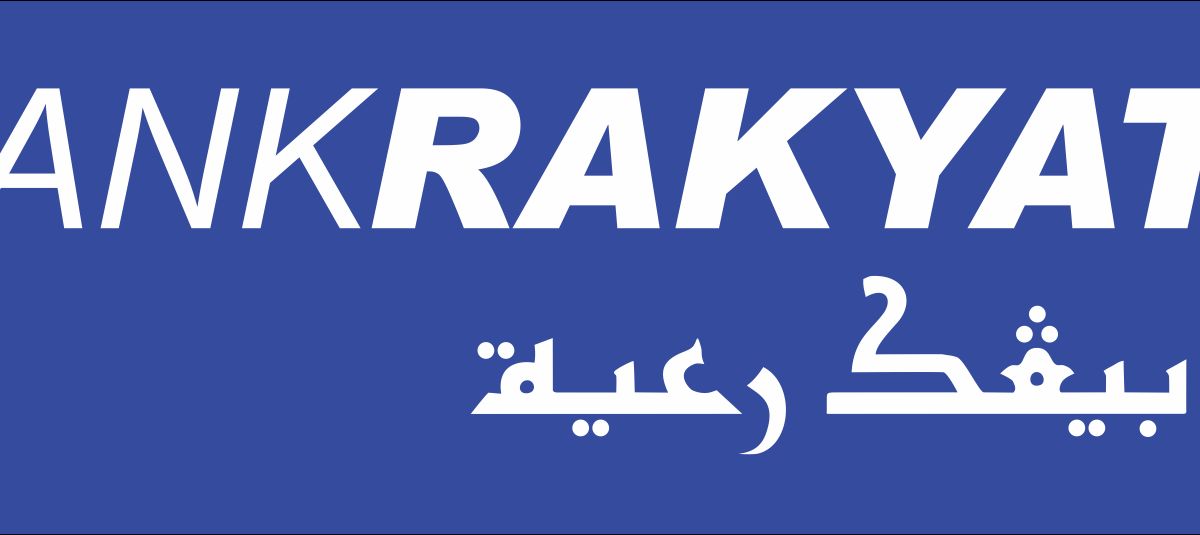The integration of Artificial Intelligence (AI) bots into the financial sector has marked a transformative era in banking services. These AI chatbots are not only redefining customer service by offering round-the-clock support and personalized advice but are also driving operational efficiency and enhancing security measures. As the banking industry embraces AI, these technological advancements are paving the way for a more streamlined, accessible, and secure financial landscape.
Key Takeaways
- AI chatbots in finance provide 24/7 customer service, personalized advice, and handle complex inquiries, improving the customer experience and reducing human workload.
- Automation through AI enhances operational efficiency by streamlining back-office processes, reducing errors, and strengthening compliance and risk management.
- AI assistants are transforming customer interactions, offering virtual assistance and making financial services more accessible, particularly in neobanks.
- AI plays a crucial role in fraud detection by analyzing transactions in real-time, identifying trends, and providing predictive alerts to secure financial transactions.
- The future of banking with AI chatbots involves custom development, integration with existing systems, and shaping customer expectations for innovative banking solutions.
The Advent of AI Chatbots in Customer Service
24/7 Availability and Instant Response
The integration of AI chatbots in the banking sector has ushered in an era of unprecedented convenience for customers. With the ability to interact with their financial institutions at any time, customers no longer need to plan their schedules around bank opening hours. This 24/7 availability is not just about accessibility; it's about providing instant responses to customer inquiries, which is now a baseline expectation in the digital age.
- Instant Customer Service: Chatbots deliver immediate answers to common questions, allowing for efficient resolution of customer issues.
- Round-the-Clock Support: Users can perform transactions or receive financial advice regardless of the time or their location.
- High Volume Handling: AI chatbots can manage numerous queries simultaneously, ensuring no customer is left waiting.
The round-the-clock availability of a finance AI chatbot is a game-changer for fintech companies, especially nowadays, when customers expect instant support.
Imagine the relief of a customer who encounters an issue with their account in the middle of the night. Instead of waiting for morning, they can receive help at the moment of need. This level of service not only enhances customer satisfaction but also builds trust in the financial institution's ability to support its clients anytime, anywhere.
Personalized Financial Advice
AI chatbots in the financial sector have transcended the role of simple transactional assistants to become sophisticated advisors. They offer tailored financial guidance by analyzing individual spending habits, income, and financial goals. This personalized advice is crucial in helping users manage their finances more effectively.
- Personalized Financial Insights: AI provides actionable advice based on user-specific data.
- Predictive Account Balancing: Chatbots can forecast future account balances, aiding in cash flow management.
- Automated Savings Programs: Users are nudged towards saving through automated mechanisms.
The integration of AI into financial services has made it possible for customers to receive highly individualized recommendations and services. This not only enhances customer engagement but also fosters a sense of trust and value in the financial institution.
Handling Complex Inquiries with Ease
AI chatbots in the banking sector have transcended the role of simple query responders to become sophisticated virtual consultants. They can handle complex inquiries, such as those related to credit card options, with a finesse that rivals human interaction. This capability not only enhances customer experience but also drives sales and retention.
AI chatbots are equipped to manage a wide array of customer needs, from providing personalized financial advice to executing transactions. Their integration with voice recognition technology further simplifies banking tasks, allowing customers to use voice commands for various operations.
The implementation of AI in customer support is a game-changer. It offloads routine and repetitive questions from human consultants, freeing them to tackle more significant issues. This shift ensures that customers receive prompt and accurate responses, while consultants focus on areas where human expertise is indispensable.
- Improved customer support
- Enhanced customer interaction
- Ensured data security
By leveraging AI, banks can provide a level of service that is both highly efficient and secure, addressing customer inquiries with precision and care.
Operational Efficiency Through Automation

Streamlining Back-Office Processes
The integration of AI chatbots in the financial sector has led to a significant transformation in back-office operations. Robotic process automation (RPA) is at the forefront of this change, automating mundane and repetitive tasks, which results in increased efficiency and accuracy while simultaneously reducing operational costs.
By delegating routine tasks to AI systems, financial institutions can reallocate their human capital to focus on more complex and creative challenges, optimizing the use of talent and fostering innovation.
The benefits of streamlining back-office processes through automation are manifold:
- Cost reduction: Automation leads to significant savings by minimizing the time and resources spent on manual tasks.
- Competitive advantage: Staying ahead in the financial industry often hinges on the ability to innovate and automate effectively.
- Talent optimization: Employees are freed from repetitive tasks and can contribute to areas that require human judgment and creativity.
These advancements not only enhance operational efficiency but also reshape the financial services landscape, offering better rates and lower fees to customers while maintaining a competitive edge.
Reducing Errors in Banking Procedures
The integration of AI in banking procedures has significantly reduced the margin of error in routine tasks. Automated systems powered by AI are less prone to the mistakes that human operators can make, ensuring higher accuracy in data handling and transaction processing. This precision is crucial in maintaining the integrity of financial records and customer trust.
- Data Entry and Validation: AI algorithms can quickly process and validate large volumes of data, flagging inconsistencies for review.
- Document Processing: Machine learning models are trained to extract relevant information from various document types, reducing manual effort and the potential for error.
- Transaction Monitoring: Continuous monitoring of transactions by AI systems helps in identifying and rectifying discrepancies swiftly.
By minimizing errors, banks can offer a more reliable service, enhancing customer satisfaction and trust in the financial system. The proactive correction of errors also leads to a reduction in operational costs and a more streamlined banking experience.
Enhancing Compliance and Risk Management
In the ever-evolving landscape of financial regulations, AI chatbots are proving to be invaluable allies. By automating the extraction and analysis of regulatory data, these intelligent systems are transforming the way banks manage compliance and risk. The integration of AI into compliance workflows not only streamlines the process but also significantly reduces the time to market for new financial products.
AI's capability to interpret complex regulatory texts and ensure adherence to legal standards is a game-changer. It minimizes the risk of penalties and reputational damage by maintaining up-to-date compliance. This is particularly crucial as financial institutions navigate the intricate web of anti-money laundering (AML) regulations and other legal requirements.
- Regulatory text analysis
- Compliance guideline interpretation
- Legal standard adherence
- Real-time transaction monitoring
AI technology is not just about keeping pace with regulations; it's about staying ahead. By proactively monitoring regulatory changes and adapting quickly, AI empowers banks to be more agile in their risk management strategies.
The traditional reliance on internal compliance teams is being challenged by AI's efficiency. Manual processes, which are time-consuming and costly, are giving way to automated systems that can keep up with the frequent changes in compliance regulations, ensuring that banks remain compliant without constant manual intervention.
Transforming Customer Interactions with AI Assistants
From Human Support to Virtual Assistance
The transition from traditional human support to virtual assistance is a significant milestone in the banking sector. AI chatbots and virtual assistants are not just transforming the way customers interact with their banks but are also redefining the customer experience.
Enhanced Customer Interaction and Support
- AI chatbots are capable of conducting complex conversations and executing banking transactions.
- Voice recognition integration allows for banking tasks to be performed via voice commands.
Transaction Assistance
- Chatbots provide step-by-step guidance for transactions, enhancing user experience.
- They offer error resolution and transaction confirmation, making financial operations smoother.
Moreover, the use of AI in banking enables a personalized customer experience. Virtual assistants provide real-time assistance, utilizing natural language processing to understand and respond to customer requests promptly. This contributes to a more engaging and improved customer experience, with AI virtual assistants delivering 24/7 customer support.
Improving Accessibility to Financial Services
The integration of AI into financial services is a game-changer for customer accessibility. AI-driven platforms are making financial services more intuitive and easier to use, catering to a broader audience, including those who may have been underserved by traditional banking models. For instance, AI chatbots can guide users through complex financial processes, simplifying tasks such as account setup, transaction inquiries, and loan applications.
With the advent of AI, financial services are no longer confined to brick-and-mortar establishments or standard business hours. Customers can now manage their finances anytime and anywhere, thanks to mobile banking apps powered by AI. This has led to a significant increase in financial inclusion, allowing people from various socio-economic backgrounds to participate in the financial system.
The promise of AI in finance is to deliver a seamless and inclusive banking experience, breaking down barriers that have historically limited access to financial services.
The table below illustrates the impact of AI on customer experience in the financial sector:
As we continue to witness the evolution of financial services, it's crucial to recognize the transformative role of AI in democratizing access to banking and fostering a more inclusive financial landscape.
Neobanks and the Rise of AI-Driven Support
The Rise of Neobanks is a testament to the transformative power of technology in the financial sector. Defined as digital-only, mobile-first financial institutions, neobanks are disrupting the traditional banking scene with their innovative approaches to financial services. AI-powered neobanking is at the forefront of this revolution, offering convenience, low fees, and a suite of innovative features that appeal to a tech-savvy generation.
AI technology enables neobanks to provide personalized banking experiences by analyzing customer data and behavior in real-time. This data-driven approach allows for tailored recommendations and offers that resonate with individual customers' needs.
Neobanks leverage AI-driven chatbots and virtual assistants to ensure 24/7 customer support, answering frequently asked questions and assisting with account inquiries. This automation extends beyond customer service, streamlining financial processes and enhancing risk management and compliance. The integration of AI into neobanking is not just a trend; it's a strategic move that is setting new standards for customer interactions and operational efficiency in the banking industry.
AI in Fraud Detection and Prevention

Real-Time Transaction Analysis
In the fast-paced world of finance, real-time transaction analysis is a cornerstone of modern fraud detection systems. By leveraging AI, banks can monitor and analyze every transaction as it happens, ensuring immediate action can be taken against suspicious activities. This continuous scrutiny is not only crucial for preventing fraud but also for maintaining customer trust and regulatory compliance.
- Data analysis: AI systems scrutinize vast amounts of data to identify unusual patterns indicative of fraudulent behavior.
- Real-time monitoring: Transactions are observed as they occur, allowing for the swift detection and mitigation of potential risks.
- Fraud detection: Sophisticated algorithms evaluate transactional data and customer habits to pinpoint and investigate anomalies.
The ability to analyze and act upon transaction data in real time has become indispensable in the banking sector. It empowers financial institutions to offer more secure and personalized services, catering to the dynamic needs of their customers.
The integration of AI in transaction monitoring systems has transformed the landscape of banking security. For example, when a pattern of irregular large withdrawals is detected, the system immediately flags it for further scrutiny. This level of vigilance is essential for adhering to anti-money laundering regulations and safeguarding against financial crimes.
Trend Identification and Predictive Alerts
The integration of AI in banking has led to significant advancements in trend identification and the generation of predictive alerts. Financial institutions now harness the power of AI to analyze vast amounts of data, enabling them to forecast market trends and customer behavior with remarkable accuracy. For instance, banks like US Bank utilize AI to scrutinize customer activities and proactively offer personalized financial products, thereby enhancing customer satisfaction and increasing cross-selling opportunities.
Predictive analytics in banking goes beyond customer insights; it is pivotal in risk management. By anticipating potential financial risks and vulnerabilities, banks can act preemptively, thus minimizing losses and bolstering financial stability. AI's predictive capabilities also provide deep customer insights, which banks leverage to tailor their services to individual needs, based on past interactions and transactions.
Mastercard's recent initiative exemplifies the power of AI in fraud detection. The payments giant has developed a proprietary generative AI model to assist its banking network in identifying and eradicating fraudulent transactions. This move underscores the growing reliance on AI to strengthen security and maintain the integrity of financial transactions.
Strengthening Security in Financial Transactions
The integration of AI in financial transactions has significantly bolstered security measures, ensuring the safety of customer accounts. AI algorithms are instrumental in fraud detection, analyzing vast amounts of data to identify suspicious activities in real time. This proactive approach to security helps in safeguarding customers' financial assets and maintaining trust in financial institutions.
AI chatbots are not only enhancing customer service but are also pivotal in the real-time monitoring of transactions. Their ability to provide immediate alerts on detecting unusual behavior patterns is crucial in preventing financial loss.
The table below summarizes key security features enabled by AI in banking:
Ensuring that sensitive financial information is processed securely by AI systems is paramount. As AI continues to evolve, it will play an even more critical role in the prevention of fraud and the protection of financial transactions.
Building the Future of Banking with AI Chatbots

Custom AI Chatbot Development
The development of custom AI chatbots represents a significant leap forward in the banking sector, offering institutions the ability to tailor customer interactions to their specific needs. Banks can now train AI chatbots with their own data, ensuring that the responses are aligned with the bank's policies and customer service ethos.
The process of creating a custom AI chatbot involves several key steps:
- Selection of the appropriate language model (LLM) for the bank's requirements.
- Customization of the chatbot's user interface (UI) to match the bank's branding and user experience goals.
- Rigorous testing in a production environment to refine the chatbot's performance.
By focusing on iterative development and continuous learning, banks can deploy chatbots that not only respond to customer inquiries but also evolve with the changing landscape of customer needs and banking services.
With the right approach, these AI-driven assistants can transform the customer experience, offering advice, facilitating transactions, and even providing predictive analytics for personalized product offerings. The trend towards AI-enhanced mobile banking apps and chatbots is a clear indicator of the industry's commitment to innovation and customer satisfaction.
Integrating AI into Existing Banking Systems
The integration of AI into existing banking systems marks a pivotal shift in the financial sector, offering unprecedented levels of efficiency and customer satisfaction. Banks are now able to provide more personalized and responsive services, thanks to the adaptive nature of AI technologies.
- Strategic Planning: Establishing clear goals for AI integration and aligning them with business objectives.
- Data Infrastructure: Upgrading and maintaining robust data systems to support AI functionalities.
- AI Expertise: Partnering with AI specialists or nurturing in-house talent to drive innovation.
- Customer-Centric Solutions: Prioritizing AI applications that deliver tangible benefits to customers.
The seamless fusion of AI with traditional banking operations not only streamlines processes but also opens up new avenues for customer engagement and service delivery. It's a transformative journey that requires careful planning and execution to ensure that the benefits of AI are fully realized without disrupting the existing service framework.
Financial institutions that embrace AI integration are setting themselves apart by enhancing their service offerings and operational capabilities. This strategic move is not just about keeping pace with technological advancements but also about shaping a future where banking is more accessible, secure, and tailored to individual needs.
The Role of AI in Shaping Customer Expectations
The integration of AI into banking systems is not merely a technological upgrade; it's a transformative movement that is reshaping customer expectations. As AI becomes more prevalent in the financial sector, customers are beginning to anticipate a new standard of service—one that is more personalized, efficient, and secure.
- Personalization: AI's ability to analyze data and learn from interactions means that customers can expect services that are tailored to their unique needs.
- Efficiency: The speed and accuracy of AI-driven processes promise a more streamlined banking experience.
- Security: With AI's advanced monitoring capabilities, customers have greater peace of mind regarding the safety of their financial transactions.
The future of banking lies in the ability to offer a customer experience that is not only technologically advanced but also deeply attuned to the individual's preferences and requirements. The role of AI in this regard cannot be overstated.
Adopting AI technology involves technical adjustments as well as shifts in customer expectations and organizational practices. As banks consider deeper integration of AI, they must also prepare for the evolving landscape of customer service, where immediacy, personalization, and security become the benchmarks of excellence.
Conclusion
The integration of AI bots into the banking and finance sector marks a transformative era in customer service and operational efficiency. These intelligent systems, capable of handling a myriad of customer inquiries and automating routine tasks, are not only elevating the customer experience to new heights but also reshaping the landscape of financial transactions and support. From providing 24/7 assistance to detecting fraudulent activities, AI bots are empowering banks to deliver personalized, efficient, and secure services. As we look to the future, the continued advancement of AI technology promises even greater enhancements in banking processes, ensuring that financial institutions remain at the forefront of innovation and customer satisfaction.
Frequently Asked Questions
What types of customer inquiries can AI bots handle in banking?
AI bots in banking can automate a range of customer inquiries including account balance checks, transaction history, loan application processes, and credit card fraud alerts. They can also provide personalized financial advice and execute transactions upon request, offering 24/7 support.
How do AI chatbots enhance customer experiences in banking?
AI chatbots enhance customer experiences by providing real-time assistance, addressing queries and concerns without human intervention, utilizing natural language processing to understand customer requests, and providing accurate responses promptly.
In what ways does AI contribute to operational efficiency in banking?
AI contributes to operational efficiency by automating routine manual operations such as data input and document processing, reducing errors in banking procedures, and analyzing data for fraud detection and risk assessment.
How are AI chatbots revolutionizing customer service in banking?
AI chatbots are revolutionizing customer service by handling a multitude of tasks such as answering transaction queries and providing financial advice, thus improving the way banks interact with their customers.
What challenges do AI-powered chatbots address in banking?
AI-powered chatbots address challenges such as streamlining customer service, automating back-office processes, enhancing compliance, driving cost efficiencies, and improving the delivery of complex financial services.
How is AI used in fraud detection and risk management in banking?
AI is used in fraud detection and risk management by analyzing massive volumes of data, identifying trends, and detecting fraudulent activities in real time, which strengthens security in financial transactions.



